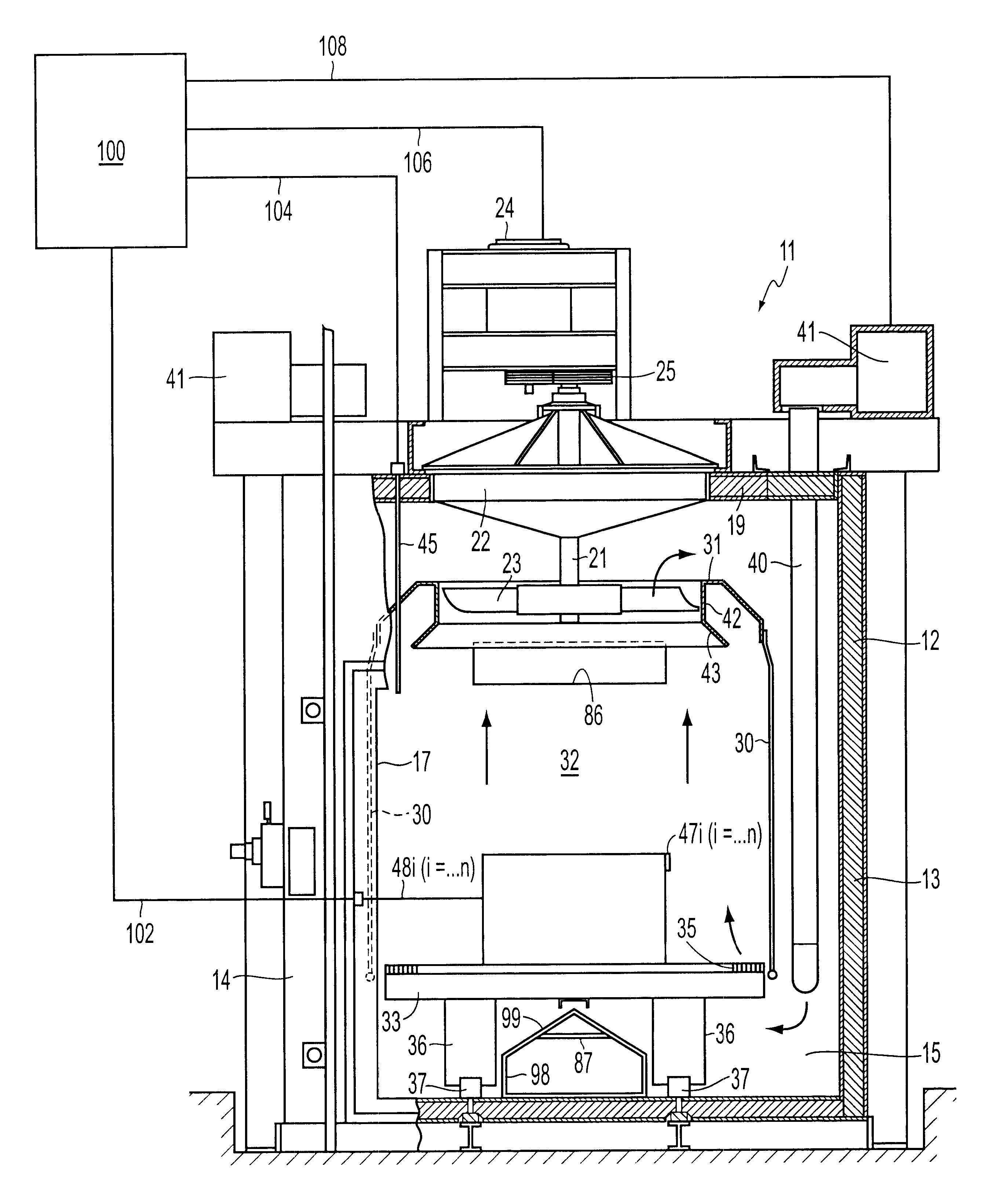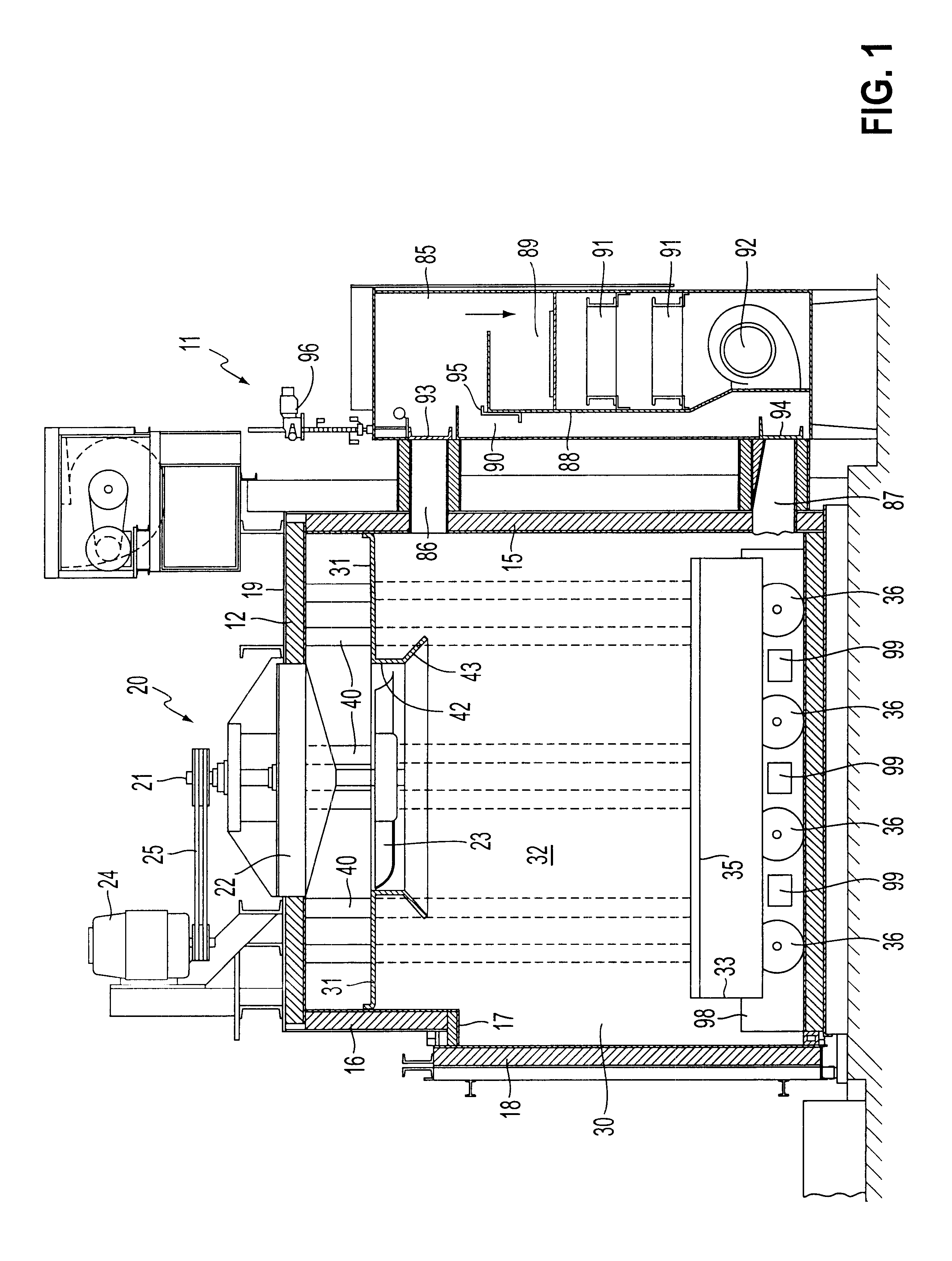Adjustable ratio control system and method
- Summary
- Abstract
- Description
- Claims
- Application Information
AI Technical Summary
Problems solved by technology
Method used
Image
Examples
first embodiment
FIGS. 3 and 4 are flowcharts outlining a first embodiment for performing adjustable ratio control. In FIG. 3, the largest temperature differential from among the various zones is determined. FIG. 4 is a flowchart outlining the control process for implementing the adjustable ratio control using the maximum temperature differential determined in FIG. 3.
FIG. 3 is an embodiment for determining the largest .DELTA.t among the various zones. The operation begins at step S100 and proceeds to step S110. In step S110, the largest temperature differential .DELTA.t is determined from among the plurality of zones. Then, in step S120, the largest temperature differential is set as the maximum temperature differential .DELTA.tmax. Thereafter, the operation ends at step S130.
FIG. 4 is a flowchart outlining the control process for implementing the adjustable ratio control according to the first embodiment of the invention. The operation begins at step S200 and proceeds to step S210 where the tempera...
second embodiment
FIG. 5 is a flowchart outlining the control process for implementing the adjustable ratio control according to the invention using the maximum temperature differential determined in FIG. 3. The operation begins at S300 and proceeds to step S310 where a temperature differential .DELTA.t of a zone is retrieved.
In step S320, a determination is made as to whether the current temperature differential .DELTA.t, is greater than or equal to the maximum temperature differential .DELTA.tmax. If the temperature differential .DELTA.t is greater than or equal to the maximum temperature differential .DELTA.tmax, the operation proceeds to step S330. Otherwise, the operation proceeds to step S340 where the air set point AIR SP is the same as the work set point WSP. Thus, the air temperature set point AIR SP within the zone is the same as the annealing temperature of the coil because the adjustable ratio Ra is set to zero. In this embodiment, the coils with the lowest thermocouple reading are raised...
third embodiment
FIGS. 6 and 7 are flowcharts outlining a third embodiment for performing adjustable ratio control. In FIG. 6, the largest temperature differential from among the various zones and corresponding work temperature of the zone with the largest temperature differential is determined. FIG. 7 is a flowchart outlining the control process for implementing the adjustable ratio control using the maximum temperature differential and work temperature determined in FIG. 6.
FIG. 6 is a flowchart outlining another control process for implementing the adjustable ratio control similar to the flowchart of FIG. 3. However, in this embodiment, the work temperature WT for the zone with the largest temperature differential is set as the minimum work temperature Wtmin. The operation begins at step S400 and proceeds to step S410 and step S420 similar to steps S110 to S120 of FIG. 3. However, in step S430, the work temperature WT of the zone with the maximum temperature differential .DELTA.tmax is set as the ...
PUM
| Property | Measurement | Unit |
|---|---|---|
| Temperature | aaaaa | aaaaa |
| Ratio | aaaaa | aaaaa |
Abstract
Description
Claims
Application Information
 Login to View More
Login to View More - R&D Engineer
- R&D Manager
- IP Professional
- Industry Leading Data Capabilities
- Powerful AI technology
- Patent DNA Extraction
Browse by: Latest US Patents, China's latest patents, Technical Efficacy Thesaurus, Application Domain, Technology Topic, Popular Technical Reports.
© 2024 PatSnap. All rights reserved.Legal|Privacy policy|Modern Slavery Act Transparency Statement|Sitemap|About US| Contact US: help@patsnap.com










